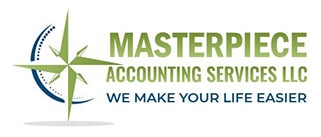Well, here we are — just like that, we find ourselves already a quarter of the way through 2023. While people everywhere are breaking out the deep cleaning sprays and scrub brushes to get a little springtime sparkle, you might want to be thinking about a similar process for your Northeast States business. You know, while we’re all in the mood.
(Though I should clarify for full disclosure that here at Masterpiece Accounting Services … we’ve been in “busy season” mood and aren’t quite in that “spring cleaning mood” ourselves yet, ha.)
For your business, I’m not talking about cleaning all the windows and organizing cluttered spaces (though that’s plenty nice).
What I’m referring to is tidying up things like your recordkeeping and your digital spaces, revamping your customer experience, and priming some important aspects of your business so you’ll reach this year’s goals.
That might also mean refreshing your process for training new employees and looking at how to upskill your staff (ahem, my topic for today).
And if you want to sit down and talk out some cleaning strategy to get your business in tip-top shape, let’s get you on the schedule: 914-752-3632
Alright, let’s come back to do a little bit of business spring cleaning, shall we?
Making a Plan to Reskill and Upskill Your Staff
“Teaching is the highest form of understanding.” – Aristotle
The business world changes quickly. Remember way back when only secretaries needed to know typing … well, you must be from another planet if you don’t know how to type nowadays.
Your company can only benefit by formalizing the learning process — in other words, by making a plan to reskill or upskill your staff (or both). When done right, this can save you money, improve retention and recruiting, and boost productivity.
Let’s see how.
What’s in it for both parties?
One major reason Northeast States employees ditch their jobs is that they see nowhere to progress with that employer. They’re bound to appreciate a path that allows them to hone skills or learn new ones. They’ll show up every morning more interested and engaged — and more productive.
And you won’t have to shell out for the costs of continuously outsourcing or making new hires. The cost of replacing an employee who leaves a company is about a third — sometimes much more — of their annual salary. If you should need new employees, they might also be easier to find if you have a system in place for upskilling. (Almost all participants recently told surveys that they thought job training is important, showing that people really care about this area.)
What if I invest all this training in someone and they leave for a better job? They might — that’s always the danger, and it comes with running any company. Think of it like any other business risk: The right person you want on your team isn’t going to jump ship the second you’ve given them something. Don’t let this stop you from making the move to reskill and/or upskill your staff.
So, how do you start?
Team effort
Start, as usual, by securing buy-in from your senior employees, specifically on the skill gaps of your staff. What could the whole team do better or faster, and how do you teach them what they need to know?
Survey employees about what they feel they’re lacking and where they need to improve. (You’ll also get a sense from this survey of which employees might do the most for your organization with a little learning …)
This learning has to be a management-down effort; employees can’t feel they’re the only ones being asked to learn. With input from your senior staff, reassess jobs and job descriptions to see what skills would be needed now from a manager or employee if they were an applying candidate today.
Two sides of the same coin
The distinction between upskilling and reskilling is basically improving existing skills versus teaching new ones.
Upskilling: Some learnable new skills can naturally expand on what a worker already does. This creates a natural context to upskill your staff. For instance, programmers can learn more languages or more about keeping IT networks running. Marketing folks can always use a writing or graphics course. Do your sales folks need to learn a new CRM system? What are the gaps between your people’s skills today and where they should be tomorrow? A big part of a formal upskilling program is never assuming your people are just going to pick these skills up on their on.
Reskilling: This involves teaching employees the skills for an entirely new occupation — for instance, your HR person moves into sales, or your tech people become office managers. Usually, you reskill employees who are looking to change the direction of their careers. That’s going to take a few one-on-ones after any staff survey. Aptitude and attitude are much more important when reskilling than when upskilling.
Stretch opportunities for your people. Doing work outside your worker’s experience and normal job description (with support from you) can give you a great idea of their capability to attack new challenges.
A few more points on that:
- Train yourself to look for aptitude. If you think you’ve got administrative assistants with leadership ability, have them run a few meetings and see how they do. Have an IT person who’s exceptional with people? Give them a stint in customer service. You’ll find out quickly who’s looking for change and who appreciates something new on the job.
- Where do you get the teachers? Outside sources, obviously, such as the local community college or business school, or online learning. All of those can potentially be budget-friendly. Also, don’t forget about your own management: Assess what they can convey and who’s willing to be a mentor or even just lead a few classes in your conference room.
- Usually, learning (and teaching) opportunities only improve camaraderie and morale in your company.
Follow up and stay ahead
Survey employees who upskilled or reskilled. What did they learn? What could have been done better? Teaching is a learning process, too.
And stay on top of your industry’s trends and what you may all have to learn tomorrow. (ChatGPT, anyone? …)
Running a business in Northeast States is a constant learning process in and of itself. We’re here to be a support to you, no matter what you need to improve your company.
In your corner,
Ibanessa Hogan

